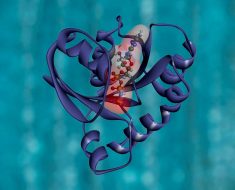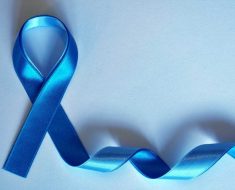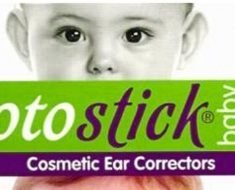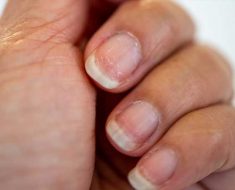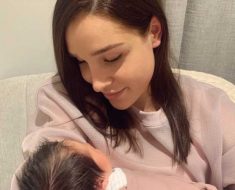In a recent study posted to the medRxiv* preprint server, the researchers assessed immunological and pathophysiological aspects of antenatal coronavirus disease 2019 (COVID-19).

Various studies have reported the disproportionate effects of severe acute respiratory syndrome coronavirus 2 (SARS-CoV-2) infections in pregnant women. However, extensive research is required to understand disease progression in pregnant women and the children born to them.
About the study
The present study characterized the immunological responses detected in the serum, breast milk, and placental samples of expectant mothers and their children with COVID-19.
The team collected breast milk from participants one month and three months postpartum. Eligible participants convalescent from antenatal COVID-19 were confirmed to be COVID-19 positive via a reverse-transcriptase polymerase-chain-reaction (RT-PCR) assay performed on nasopharyngeal swabs obtained during pregnancy.
Furthermore, the study included infants born to convalescent antenatal COVID-19-infected mothers at a gestational age of 35 to 40 weeks. The team also recruited mother-child dyads as controls, among which the mothers reported no COVID-19 symptoms and were confirmed to be SARS-CoV-2 negative at the time of study recruitment.
Venous blood samples were also collected from infants at zero to three days, one month, three months of life, and from mothers one month postpartum. The team defined recovery as the resolution of COVID-19 clinical symptoms and two negative RT-PCR results observed 24 hours apart.
A quantitative enzyme-linked immunosorbent assay (ELISA) was performed to evaluate the levels of immunoglobulin A (IgA) and IgG produced against SARS-CoV-2 antigens, including the SARS-CoV-2 spike (S) and the receptor-binding domain (RBD). Furthermore, a pseudovirus neutralization test (PVNT) and peptide-based ELISA were conducted. The team also collected COVID-19 PCR swabs from the amniotic fluid, umbilical cord blood, umbilical cord, maternal blood, vaginal swabs, placenta, and breast milk.
Results
The study results showed that among the eight women who had laboratory-confirmed COVID-19 infection during pregnancy, the average age was 30.3 ± 2.4 years. Nine controls with no antenatal COVID-19 were also included. Among the antenatal women, six had symptoms of mild COVID-19, with the most common symptoms being dry cough, malaise, and dry cough. Furthermore, none of the infected participants required either intensive care unit (ICU) admission, oxygen support, or intubation. Notably, samples of the placenta, the umbilical cord, and the infant throat swabs were SARS-CoV-2 negative via PCR.
A total of eight infants were born at full term with a mean gestational age of 39 ± 2 weeks and a mean birth weight of 3.517 ± 0.261 kg. Among the eight infants, one required neonatal ICU admission for two days due to the infant's transient tachypnea, which needed supplemental oxygen support. All the infants were breastfed for up to three months, while two of the infants were fed formula milk in addition to breast milk during the three months.
A histological examination of the mother’s placental samples showed no SARS-CoV-2 presence; however, three samples displayed acute inflammation signs. The team also observed neutrophils in the subchorionic fibrin, suggesting the incidence of subchorionitis. Remarkably, no neutrophils were found in the chorion or the amnion. Moreover, a mild inflammatory response was found in the umbilical arteries and the veins of one of the placental samples.
The team noted that plasma IgA antibodies were present in almost 50% of all the convalescent mothers. Furthermore, most of the convalescent mothers displayed the ability to neutralize SARS-CoV-2 pseudoviruses to varying degrees. Also, the SASR-CoV-2 S and RBD-specific IgG antibodies were found in almost all convalescent mothers. This indicated that the antibodies were bound to confer an extent of anti-SARS-CoV-2 protection. Moreover, it was noted that expectant mothers infected with SARS-CoV-2 at an earlier stage of pregnancy had comparable antibody titers to those infected in the later stages.
The researchers also found that the level of SARS-CoV-2-specific IgG antibodies in the serum samples of the infants was comparable to or even higher than that of the mother. This suggested the transfer of passive immunity from the mother to the infant via the placenta. However, a steady decline in the IgG levels in the infant was observed from birth to six months of life. Also, very small amounts of SARS-CoV-2 S protein and RBD-specific IgA and IgG antibodies were found in the breast milk at zero to three months postpartum.
Interestingly, the BNT162b2 COVID-19 vaccine administration in nursing mothers elicited significant levels of vaccine-induced SARS-CoV-2-specific antibodies in the breast milk. At seven to 30 days post-vaccination, high levels of SARS-CoV-2-specific IgA and IgG were found in the breast milk.
Overall, the study findings provided valuable insights regarding the impact of COVID-19 infection in expectant mothers as well as the infants born to them.
*Important notice
medRxiv publishes preliminary scientific reports that are not peer-reviewed and, therefore, should not be regarded as conclusive, guide clinical practice/health-related behavior, or treated as established information.
- Gu, Y. et al. (2022) "Immune and pathophysiologic profiling of antenatal COVID-19 in the GIFT cohort: A Singaporean case-control study". medRxiv. doi: https://doi.org/10.1101/2022.04.19.22273864 https://www.medrxiv.org/content/10.1101/2022.04.19.22273864v1
Posted in: Medical Science News | Medical Research News | Disease/Infection News
Tags: Amniotic Fluid, Antibodies, Antibody, Assay, Birth Weight, Blood, Breast Milk, Children, Coronavirus, Coronavirus Disease COVID-19, Cough, covid-19, Enzyme, immunity, Immunoglobulin, Inflammation, Intensive Care, Laboratory, Nasopharyngeal, Neutrophils, Nursing, Oxygen, Placenta, Polymerase, Pregnancy, Protein, Pseudovirus, Receptor, Research, Respiratory, SARS, SARS-CoV-2, Severe Acute Respiratory, Severe Acute Respiratory Syndrome, Syndrome, Throat, Umbilical Cord, Vaccine, Vaginal

Written by
Bhavana Kunkalikar
Bhavana Kunkalikar is a medical writer based in Goa, India. Her academic background is in Pharmaceutical sciences and she holds a Bachelor's degree in Pharmacy. Her educational background allowed her to foster an interest in anatomical and physiological sciences. Her college project work based on ‘The manifestations and causes of sickle cell anemia’ formed the stepping stone to a life-long fascination with human pathophysiology.
Source: Read Full Article

